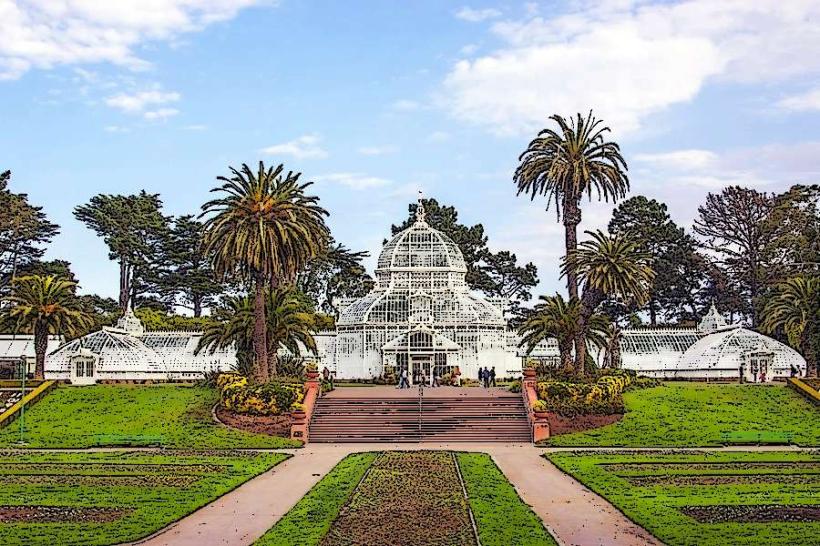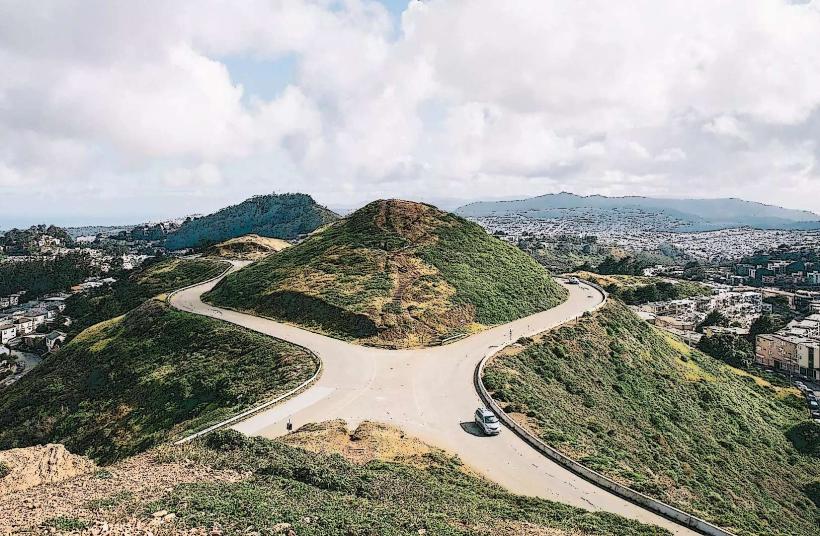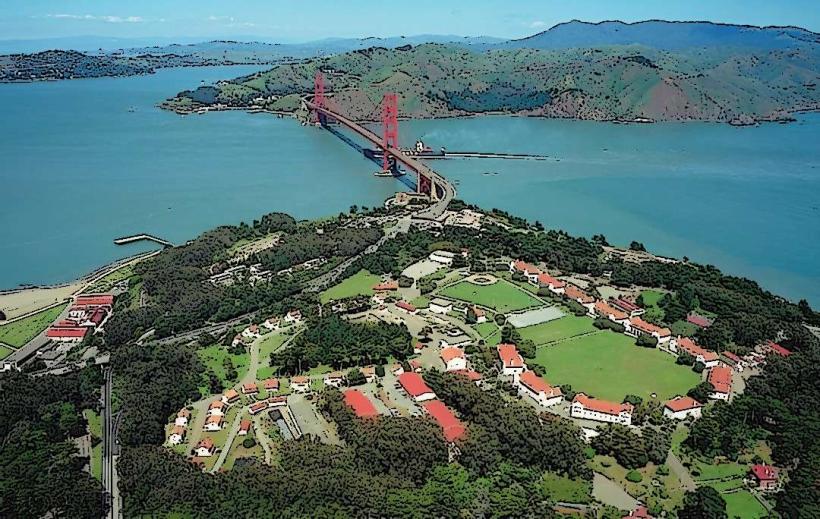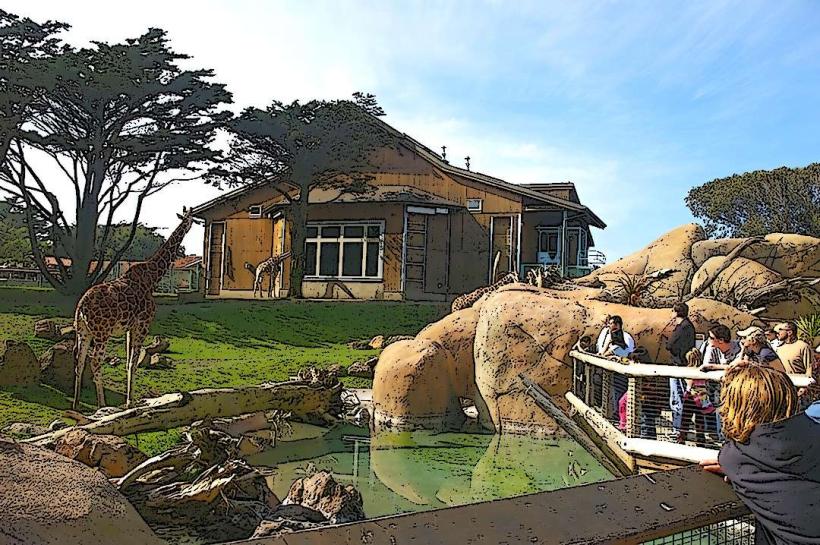Information
Landmark: Muir Woods National MonumentCity: San Francisco
Country: USA California
Continent: North America
Muir Woods National Monument, San Francisco, USA California, North America
Muir Woods National Monument is a remarkable and serene park located in the Marin County area, just north of San Francisco. Known for its towering coastal redwoods, Muir Woods offers visitors the chance to experience one of the most awe-inspiring natural landscapes in California. The monument is a sanctuary of ancient trees and is a testament to the power and beauty of nature.
History and Origins
Established in 1908: Muir Woods National Monument was established on January 9, 1908, by President Theodore Roosevelt. It was named after the famous naturalist and environmentalist John Muir, who was a passionate advocate for the preservation of California's natural landscapes and forests. Muir's work helped to raise awareness about the importance of conserving these majestic forests.
Conservation Efforts: The area was set aside as a national monument to protect its ancient coastal redwoods from logging and development. At the time, the redwood forests in California were rapidly being cut down for timber, and the establishment of Muir Woods was a critical moment in the conservation movement.
Land Ownership: The land was originally owned by William and Elizabeth Kent, who purchased the land in 1905 to protect the trees from logging. They donated the land to the federal government in 1908, leading to the establishment of the national monument.
Redwood Trees and the Forest
Coastal Redwoods (Sequoia sempervirens): The primary feature of Muir Woods is its dense and majestic forest of coastal redwoods. These trees are the tallest living organisms on Earth, with some towering over 300 feet (91 meters) tall. The redwoods in Muir Woods are considered to be between 500 and 800 years old, with some trees being over 1,000 years old.
Canopy and Forest Layers: The redwood trees form a dense canopy that creates a cool, shaded environment on the forest floor. This dense canopy helps maintain the moisture levels of the forest, creating an environment where other plants, including ferns, mosses, and shrubs, can thrive. The understory is lush with lush ferns and other vegetation that rely on the humid, shaded conditions.
Ecological Importance: The redwoods in Muir Woods play an important ecological role in the environment. The towering trees create a unique habitat for a variety of wildlife, including birds, small mammals, and insects. The dense canopy provides shelter for these species, while the trees' bark and roots support a diverse range of organisms.
Seismic and Climate Resilience: Coastal redwoods are incredibly resilient, having adapted to survive in earthquake-prone areas and varying climates. Their bark, which can be up to a foot thick, helps protect them from fire, and their roots intertwine to help stabilize the trees in seismic areas.
Visitor Experience
Hiking Trails: Muir Woods offers a network of well-maintained hiking trails, ranging from easy walks to more challenging hikes. The most popular trail is the Main Trail, which is a level, paved path that follows Redwood Creek through the heart of the forest. This trail allows visitors to walk among the ancient trees and enjoy the tranquility of the forest.
For those seeking a more immersive experience, there are several other trails that lead deeper into the forest, such as the Ben Johnson Trail and the Canopy View Trail, both of which provide scenic views and opportunities to hike up into the higher levels of the forest.
Nature and Wildlife: The monument is home to a variety of wildlife, including deer, foxes, and various bird species. The rich plant life beneath the trees includes ferns, mosses, and wildflowers, creating a vibrant ecosystem. Visitors may also spot small mammals like squirrels and chipmunks or listen to the calls of the Pacific tree frog.
Interpretive Programs: Muir Woods offers guided tours and interpretive programs that educate visitors about the natural history of the redwoods, the importance of conservation, and the role of Muir Woods in preserving California's natural heritage. The visitor center provides educational displays and interactive exhibits that give insight into the history of the monument and the science of the redwoods.
Visitor Center: The Muir Woods Visitor Center provides helpful information, maps, and souvenirs. The center is a great starting point for visitors to learn about the park's history, the ecological significance of the redwoods, and tips for hiking and exploring the monument.
Conservation and Preservation
Threats to the Forest: Coastal redwoods face several threats, including climate change, invasive species, and human activity. Muir Woods has been carefully preserved to protect it from logging and development, but ongoing conservation efforts are necessary to ensure its survival.
Preserving the Trees: Efforts to conserve the redwoods in Muir Woods include the maintenance of the forest’s natural habitat and the removal of invasive plant species that threaten the ecosystem. The National Park Service is actively engaged in preserving the forest's health and vitality for future generations.
Accessibility and Visitor Information
Location: Muir Woods is located about 12 miles (19 km) north of San Francisco in Marin County. It is easily accessible via car, though parking can be limited, especially during peak visitation periods. Visitors are encouraged to use public transportation or take shuttle buses from nearby locations like Mill Valley to reduce congestion and environmental impact.
Admission Fees: There is an entrance fee to visit Muir Woods, which helps support the upkeep and maintenance of the park. Fees vary depending on the visitor’s age, and there may be additional costs for parking.
Seasonality: Muir Woods is a year-round destination, but it is most popular during the spring and fall months when the weather is mild. Summer can be crowded, so early morning or late afternoon visits are recommended for a more peaceful experience. The park is open every day, though some holidays may have limited hours.
Shuttle Service: During the busy season, a shuttle service is available from nearby Mill Valley to Muir Woods, providing an easy way for visitors to reach the monument without dealing with limited parking.
Nearby Attractions
Mount Tamalpais State Park: Just a short drive from Muir Woods, Mount Tamalpais State Park offers hiking, biking, and spectacular views of the San Francisco Bay Area and the Pacific Ocean.
Point Reyes National Seashore: Located further north, Point Reyes National Seashore offers dramatic coastal views, wildlife viewing, and additional hiking trails.
Golden Gate National Recreation Area: Muir Woods is part of the Golden Gate National Recreation Area, which encompasses various parks, beaches, and historic sites around the Bay Area.
Conclusion
Muir Woods National Monument is a living testament to the natural beauty and ecological importance of California’s redwood forests. With its ancient trees, lush undergrowth, and peaceful environment, Muir Woods offers a place of reflection, learning, and inspiration for visitors of all ages. Whether you are a nature enthusiast, photographer, or someone seeking a tranquil escape from the city, Muir Woods is a must-visit destination in the San Francisco Bay Area.

























